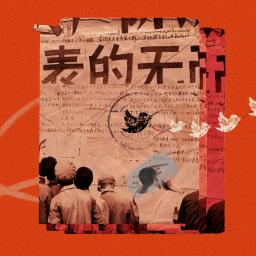 |
by Zeyi Yang on (#66TPZ)
China Report is MIT Technology Review’s newsletter about technology developments in China. Sign up to receive it in your inbox every Tuesday. The big news in China this week is how the country is reacting to a surge of coronavirus infections as it abandons most of its zero-covid measures. There are spiking infections in Beijing, fever relief…
|
MIT Technology Review
| Link | https://www.technologyreview.com/ |
| Feed | https://www.technologyreview.com/stories.rss |
| Updated | 2025-12-10 18:33 |
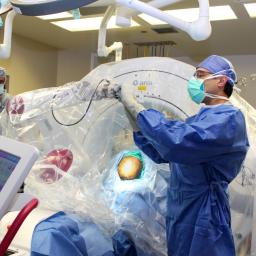 |
by Jessica Hamzelou on (#66TMA)
John’s life changed forever when he broke up with his girlfriend. The breakup sent him into a downward spiral, and led to his first depressive episode when he was 27 years old. “At first it’s just extreme sadness … then you start losing sleep,” says John (not his real name), who spoke on condition of…
|
 |
by Casey Crownhart on (#66T2V)
After many decades of trying, scientists have reached a milestone in fusion research, finally running a reaction that created more energy than was put in to start it. US Energy Secretary Jennifer Granholm announced today that researchers at the National Ignition Facility at Lawrence Livermore National Laboratory achieved what’s known as net energy gain, a…
|
 |
by Rhiannon Williams on (#66SH1)
This is today’s edition of The Download, our weekday newsletter that provides a daily dose of what’s going on in the world of technology. The viral AI avatar app Lensa undressed me—without my consent When Melissa Heikkilä, our senior AI reporter, tried the new viral AI avatar app Lensa, she was hoping to get results similar to…
|
 |
by Melissa Heikkilä on (#66SD4)
This story originally appeared in The Algorithm, our weekly newsletter on AI. To get stories like this in your inbox first, sign up here. My social media feeds this week have been dominated by two hot topics: OpenAI’s latest chatbot, ChatGPT, and the viral AI avatar app Lensa. I love playing around with new technology, so…
|
 |
by Melissa Heikkilä on (#66RMY)
When I tried the new viral AI avatar app Lensa, I was hoping to get results similar to some of my colleagues at MIT Technology Review. The digital retouching app was first launched in 2018 but has recently become wildly popular thanks to the addition of Magic Avatars, an AI-powered feature which generates digital portraits…
|
 |
by Rhiannon Williams on (#66MNS)
This is today’s edition of The Download, our weekday newsletter that provides a daily dose of what’s going on in the world of technology. DNA that was frozen for two million years has been sequenced What’s happened: After an eight-year effort to recover DNA from Greenland’s frozen interior, researchers say they’ve managed to sequence gene fragments from…
|
 |
by Casey Crownhart on (#66MJ5)
This article is from The Spark, MIT Technology Review’s weekly climate newsletter. To receive it in your inbox every Wednesday, sign up here. Wind power is one of the world’s fastest-growing renewable energy sources, and soon its reach might expand even further. This week, California held an auction for five sites off its coast that could…
|
 |
by John Roese on (#66M02)
From security to quantum, AI and edge to cloud, our digital world is evolving and expanding more quickly than ever. With so much “noise,” it can be hard to concentrate, let alone figure out where to start beyond the bits and bytes, speeds and feeds. I hear this from everyone I meet with, and it’s…
|
 |
by Antonio Regalado on (#66KJK)
After an eight-year effort to recover DNA from Greenland’s frozen interior, researchers say they’ve managed to sequence gene fragments from ancient fish, plants, and even a mastodon that lived 2 million years ago. It’s the oldest DNA ever recovered, beating the mark set only last year when a different team recovered genetic material from a…
|
 |
by Rhiannon Williams on (#66KDD)
This is today’s edition of The Download, our weekday newsletter that provides a daily dose of what’s going on in the world of technology. The metaverse fashion stylists are here Fashion creator Jenni Svoboda is designing a beanie with a melted cupcake top, sprinkles, and doughnuts for ears. But this outlandish accessory isn’t destined for the physical…
|
 |
by Tate Ryan-Mosley on (#66K7E)
Grant money meant to help cities prepare for terror attacks is being spent on surveillance technology for US police departments, a new report shows. It’s been known that federal funding props up police budgets, but the new report, written by the advocacy organizations Action Center on Race and Economy (ACRE), LittleSis, MediaJustice, and the Immigrant…
|
 |
by Zeyi Yang on (#66K7F)
China Report is MIT Technology Review’s newsletter about technology developments in China. Sign up to receive it in your inbox every Tuesday. On December 1, 2019, the first known covid-19 patient started showing symptoms in Wuhan. Three years later, China is the last country in the world holding on to strict pandemic control restrictions. However, after days…
|
 |
by Tanya Basu on (#66K60)
When I met Jenni Svoboda, she was in the midst of designing a beanie with a melted cupcake top, sprinkles, and doughnuts for ears. “It’s something you’d probably never wear in real life,” she said with a laugh. But Svoboda isn’t designing for the physical world. She’s designing for the metaverse. Svoboda is working in…
|
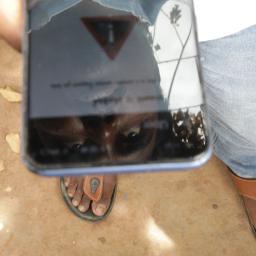 |
by Rhiannon Williams on (#66J36)
This is today’s edition of The Download, our weekday newsletter that provides a daily dose of what’s going on in the world of technology. Uber’s facial recognition is locking Indian drivers out of their accounts One evening in February last year, a 23-year-old Uber driver named Niradi Srikanth was getting ready to start another shift, ferrying passengers…
|
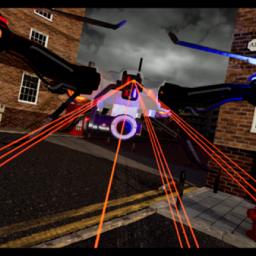 |
by Melissa Heikkilä on (#66HZC)
This story originally appeared in The Algorithm, our weekly newsletter on AI. To get stories like this in your inbox first, sign up here. I’m standing in the parking lot of an apartment building in East London, near where I live. It’s a cloudy day, and nothing seems out of the ordinary. A small drone descends…
|
 |
by Rhiannon Williams on (#66E2W)
This is today’s edition of The Download, our weekday newsletter that provides a daily dose of what’s going on in the world of technology. How Twitter’s “Teacher Li” became the central hub of China protest information As protests against rigid covid control measures in China engulfed social media in the past week, one Twitter account has emerged…
|
 |
by MIT Technology Review Insights on (#66DZ7)
|
 |
by Jessica Hamzelou on (#66DXH)
This article is from The Checkup, MIT Technology Review’s weekly biotech newsletter. To receive it in your inbox every Thursday, sign up here. We’re all crawling with bugs. Our bodies are home to plenty of distinct ecosystems that are home to microbes, fungi, and other organisms. They are crucial to our well-being. Shifts in the…
|
 |
by Li, as told to Zeyi Yang on (#66DW5)
As protests against rigid covid control measures in China engulfed social media in the past week, one Twitter account has emerged as the central source of information: @李老师不是你老师 (“Teacher Li Is Not Your Teacher”). People everywhere in China have sent protest footage and real-time updates to the account through private messages, and it has posted…
|
 |
by Will Douglas Heaven on (#66D42)
The explosion in text-to-image AI models like OpenAI’s DALL-E 2—programs trained to generate pictures of almost anything you ask for—has sent ripples through the creative industries, from fashion to filmmaking, by providing weird and wonderful images on demand. The same technology behind these programs is also making a splash in biotech labs, which have started…
|
 |
by Rhiannon Williams on (#66CSV)
This is today’s edition of The Download, our weekday newsletter that provides a daily dose of what’s going on in the world of technology. Elon Musk’s Neuralink hopes to test its brain implant in a human next year Elon Musk’s brain-computer interface company Neuralink is planning to test a brain implant in humans in six months, the…
|
 |
by Casey Crownhart on (#66CKZ)
This article is from The Spark, MIT Technology Review’s weekly climate newsletter. To receive it in your inbox every Wednesday, sign up here. I’m coming in with a hot take this week: plastics might just be the most useful inventions of the 20th century. Before you get out the pitchforks, let me take you on a…
|
 |
by Will Douglas Heaven on (#66BVC)
Buzz around GPT-4, the anticipated but as-yet-unannounced follow-up to OpenAI’s groundbreaking large language model, GPT-3, is growing by the week. But OpenAI is not yet done tinkering with the previous version. The San Francisco-based company has released a demo of a new model called ChatGPT, a spin-off of GPT-3 that is geared toward answering questions…
|
 |
by Antonio Regalado on (#66BVD)
UPDATE: I’m claiming victory. Neuralink disclosed it has been testing vision implants in monkeys, although it hasn’t made as much progress as I hoped for. In a presentation lasting more than two hours, Elon Musk said he hoped to win US Food and Drug Administration approval to implant a Neuralink computer inside a human’s skull…
|
 |
by Rhiannon Williams on (#66BFF)
This is today’s edition of The Download, our weekday newsletter that provides a daily dose of what’s going on in the world of technology. Elon Musk has created a toxic mess for the LGBTQ+ community. I would know. By Scott Wiener, a California state senator who represents San Francisco and northern San Mateo County. A mere day…
|
 |
by Casey Crownhart on (#66BB4)
We tend to lump all plastics into one category, but water bottles, milk jugs, egg cartons, and credit cards are actually made from different materials, as you’ve probably noticed while trying to figure out what can go in your recycling bin. Once they’ve reached a recycling facility, the plastic must be separated, a process that…
|
 |
by Zeyi Yang on (#66B9C)
China Report is MIT Technology Review’s newsletter about technology developments in China. Sign up to receive it in your inbox every Tuesday. The past week has meant many sleepless nights for people in China, and for people like me who are intently watching from afar. You may have seen that nearly three years after the pandemic started,…
|
 |
by Sen. Scott Wiener on (#66B7F)
A mere day after Elon Musk reactivated Rep. Marjorie Taylor Greene’s Twitter account, she tweeted that I’m a “communist groomer,” presumably because I’m a gay Jewish Democratic elected official from San Francisco. Greene’s tweet also promoted her proposed federal law to ban gender-affirming care for transgender youth and to make it effectively impossible for adult…
|
 |
by Baidu on (#66A8M)
For years, the 150-year-old Colorado State Fair has held its fine art competition under little media glare. But when it announced the 2022 winners in August, this little-known local event immediately sparked controversy around the globe. Judges had picked synthetic media artist Jason Allen’s artificial intelligence-generated work “Théâtre D’opéra Spatial” as the winner in the…
|
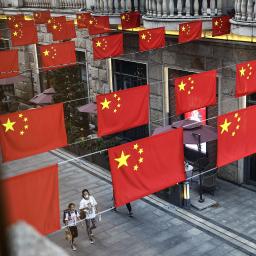 |
by Rhiannon Williams on (#66A46)
This is today’s edition of The Download, our weekday newsletter that provides a daily dose of what’s going on in the world of technology. The AI myth Western lawmakers get wrong While the US and the EU may differ on how to regulate tech, their lawmakers seem to agree on one thing: the West needs to ban…
|
 |
by Melissa Heikkilä on (#669ZV)
This story originally appeared in The Algorithm, our weekly newsletter on AI. To get stories like this in your inbox first, sign up here. While the US and the EU may differ on how to regulate tech, their lawmakers seem to agree on one thing: the West needs to ban AI-powered social scoring. As they understand it, social…
|
 |
by Rhiannon Williams on (#6690E)
This is today’s edition of The Download, our weekday newsletter that provides a daily dose of what’s going on in the world of technology. What’s next in cybersecurity In the world of cybersecurity, there is always one certainty: more hacks. That is the unavoidable constant in an industry that will spend an estimated $150 billion worldwide this…
|
 |
by Lorenzo Franceschi-Bicchierai on (#6690F)
This story is a part of MIT Technology Review’s What’s Next series, where we look across industries, trends, and technologies to let you know what to expect in the coming year. In the world of cybersecurity, there is always one certainty: more hacks. That is the unavoidable constant in an industry that will spend an…
|
 |
by Rhiannon Williams on (#6690G)
This is today’s edition of The Download, our weekday newsletter that provides a daily dose of what’s going on in the world of technology. A bot that watched 70,000 hours of Minecraft could unlock AI’s next big thing The news: An AI that binged on 70,000 hours of people playing Minecraft has learned how to play the…
|
 |
by Will Douglas Heaven on (#6690H)
OpenAI has built the best Minecraft-playing bot yet by making it watch 70,000 hours of video of people playing the popular computer game. It showcases a powerful new technique that could be used to train machines to carry out a wide range of tasks by binging on sites like YouTube, a vast and untapped source…
|
 |
by Jessica Hamzelou on (#6690J)
This article is from The Checkup, MIT Technology Review’s weekly biotech newsletter. To receive it in your inbox every Thursday, sign up here. Peter Zhu was just 19 years old when he died following a skiing accident in West Point, New York. His donor card made clear he had wanted to donate his organs. But…
|
 |
by Rhiannon Williams on (#66622)
This is today’s edition of The Download, our weekday newsletter that provides a daily dose of what’s going on in the world of technology. The US and China are pointing fingers at each other over climate change The UN climate conference wrapped up over the weekend after marathon negotiations that ran way over. The most notable outcome was the…
|
 |
by Casey Crownhart on (#665XX)
The UN climate conference just wrapped up over the weekend after a marathon negotiating session that stretched talks nearly 48 hours past their scheduled conclusion. (A question for my editor: the UN isn’t hitting deadlines, so do I still have to?) The most notable outcome from the conference was establishment of a fund to help…
|
 |
by Tammy Xu on (#665V5)
Large language models are one of the hottest areas of AI research right now, with companies racing to release programs like GPT-3 that can write impressively coherent articles and even computer code. But there’s a problem looming on the horizon, according to a team of AI forecasters: we might run out of data to train…
|
 |
by Rhiannon Williams on (#6651F)
This is today’s edition of The Download, our weekday newsletter that provides a daily dose of what’s going on in the world of technology. Meta’s game-playing AI can make and break alliances like a human Meta has created an AI that can beat humans at an online version of Diplomacy, a popular strategy game in which seven…
|
 |
by Will Douglas Heaven on (#664S4)
Meta has created an AI that can beat humans at an online version of Diplomacy, a popular strategy game in which seven players compete for control of Europe by moving pieces around on a map. Unlike other board games that AI has mastered, such as chess and Go, Diplomacy requires players to talk to each…
|
 |
by Zeyi Yang on (#664MN)
China Report is MIT Technology Review’s newsletter about technology developments in China. Sign up to receive it in your inbox every Tuesday. This morning, I published an explainer on China’s social credit system. The government released a draft law on November 14 that will eventually serve as the top-level guidance on how the country builds the system. …
|
 |
by Rhiannon Williams on (#663H3)
This is today’s edition of The Download, our weekday newsletter that provides a daily dose of what’s going on in the world of technology. Here’s why China’s new social credit law matters It’s easier to talk about what China’s social credit system isn’t than what it is. Ever since 2014, when China announced plans to build it,…
|
 |
by Melissa Heikkilä on (#663BE)
This story originally appeared in The Algorithm, our weekly newsletter on AI. To get stories like this in your inbox first, sign up here. When Meta launched Galactica, an open-source large language model designed to help scientists, the company—reeling from criticism of its expensive metaverse investments and its recent massive layoffs—was hoping for a big PR win. Instead,…
|
 |
by Zeyi Yang on (#663BF)
It’s easier to talk about what China’s social credit system isn’t than what it is. Ever since 2014, when China announced a six-year plan to build a system to reward actions that build trust in society and penalize the opposite, it has been one of the most misunderstood things about China in Western discourse. Now,…
|
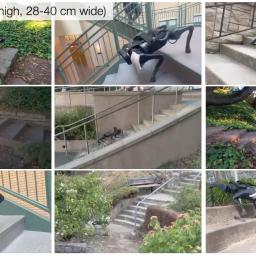 |
by Melissa Heikkilä on (#662H1)
When Ananye Agarwal took his dog out for a walk up and down the steps in the local park near Carnegie Mellon University, other dogs stopped in their tracks. That’s because Agarwal’s dog was a robot—and a special one at that. Unlike other robots, which tend to rely heavily on an internal map to get…
|
 |
by Rhiannon Williams on (#662C3)
This is today’s edition of The Download, our weekday newsletter that provides a daily dose of what’s going on in the world of technology. How much would you pay to see a woolly mammoth? Sara Ord has one of the most futuristic job titles around—director of species restoration at Colossal Biosciences, the world’s first “de-extinction” company. Her…
|
 |
by Jonas Nahm on (#66289)
In August, President Joe Biden signed the Inflation Reduction Act (IRA) into law, the largest US climate bill in more than a decade. The legislation puts the country back on track to meet its commitments under the 2015 Paris Agreement. Beyond enacting specific measures to reduce US carbon emissions by more than 40 percent by…
|
 |
by Antonio Regalado on (#6626N)
Sara Ord spent her week talking to scientists about skin cells from a mouse-size marsupial called the dunnart. The cells were sent to the “de-extinction” company where she works, Colossal Biosciences, from collaborators in Australia. Ord’s job is to lead a team that’s figuring out how to use gene editing to gradually change the DNA…
|